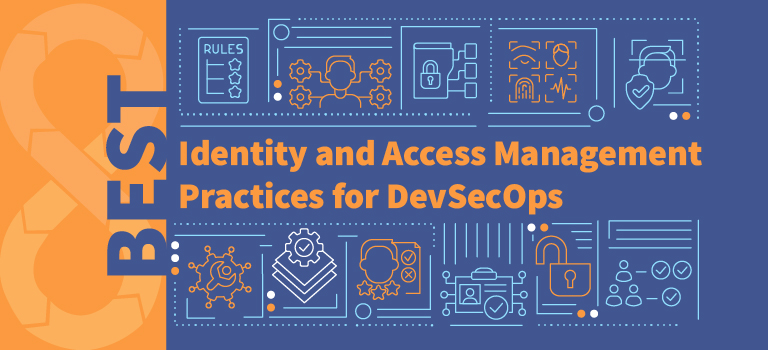Humans have long been the weakest link in an organization’s cybersecurity infrastructure. Statistics reveal that human errors such as misconfigurations, secret leakage, and bad data hygiene cause 95% of data breaches. Hackers rarely find their way into a system through brute force attacks; in fact, the most commonly known strategy is phishing attacks that help them stealthily maneuver their way within an organization’s network. Amidst this understanding, Identity and Access Management (IAM) and making it applicable is the best way to ensure DevSecOps security.
Importance of Identity and Access Management (IAM) in DevSecOps
The rise in human-centric data breaches has made IAM a crucial part of cybersecurity. Without uniform access control through authorization and authentication, there cannot be a functional and connected security system.
Proper identity and access management significantly reduce the probability of an organization falling victim to dire cybersecurity incidents. Employees having complete access to every type of data, specifically within an organization that lacks adequate phishing training and awareness programs, can wreak havoc on the organization’s security and integrity. Just recently, Cisco fell victim to a $1.4 million damage only because an employee had access to their system five months after their resignation. Similarly, a renowned venture capital firm, Sequoia Capital, got hacked in February 2021 because their employee fell victim to a phishing attack, exposing critical information to third parties.
If the least-privilege access policy were a part of both firms mentioned above, the damage caused by a single rogue employee would have been reduced significantly. Even with least-privileged access, there has to be a thorough implementation of other IAM practices. Moreover, the organization must take other precautionary steps to limit the scope of damage and mitigate risks altogether.
Top Three Best Identity and Access Management (IAM) for DevSecOps
Finding the best IAM policy that fits your organization’s needs can be a bit exhaustive. The best practice must have a strong starting point that helps enable robust security within the network infrastructure. Some of the best IAM practices for DevSecOp are as follows:
1. Prevent Data Leakage
Undoubtedly, protecting your sensitive information, such as credentials and code secrets, from leaking is a top priority. It is crucial to employ regular threat detection and monitoring to ensure none of your credentials are available on the dark web, open for sale and exploitation.
Implementing policies that prevent workers from secret sharing and hardcoding secrets is crucial. Several tools help make these tasks easy, such as setting up secret vaults that help project Application Programming Interface (API) and encryption keys. Moreover, you can also help implement security by having a robust security-centric workplace environment.
The most crucial element to preventing data leakage is minimizing the effects of human errors. Since employees are a critical part of an organization, it is mandatory to ensure they undergo proper phishing training and cybersecurity awareness to protect vital information.
2. Manage Identities and Enable Least-Privilege Access
Most workplace cultures, specifically within small-scale businesses, and organizations, manage to blur lines forming hierarchies to ensure a friendly and relaxed workplace setup. While this is an excellent social practice, an organization must enable hierarchical division when it comes to sharing sensitive information.
Not all information is for every employee and organizations must sketch these lines to protect themselves from critical damage. Employees should have divided roles and tasks; therefore, the information shared with them should be divided as per task. Having identity control and managing who has access to what information can help reduce the pool size of information distribution. With only a small number of people having access to critical details, the organization can protect it from exploitation.
3. Ensure Password Security
Password security is of utmost importance when it comes to implementing data security. However, since the traditional concept of the password has become quite vulnerable for attacks, originations must implement modern password security measures.
Most organizations usually opt for MFA solutions paired with robust password managers. The combination of password managers and MFA significantly enables password security as password managers help employees keep complex passwords secure, while MFA forms layered password protection.
Along with these methods, another effective way of enabling password security is to opt for single-sign-on methods. This method is reliable as it generates a single, one-time password that the employee receives on a personal device, such as a mobile phone or email. This method is secure if any hacker gains access to the personal device or email access.
Final Words
Enabling data security is arduous and can be exhaustive, specifically in the modern world where the cyber-threat environment is throbbing with criminal activities. As cybercriminals continue to grow more sophisticated in their ventures, it has become downright crucial for organizations to implement robust practices such as IAM to enable cybersecurity.
Identity and Access Management practices have, and rightly so, become the root of cybersecurity as it helps minimize the shared information pool. Organizations can protect themselves from significant damage by controlling the amount of information and access each employee has..
Shigraf Aijaz
Tags: Access Control, Cybersecurity, Data Security, DevSecOps, IAM


